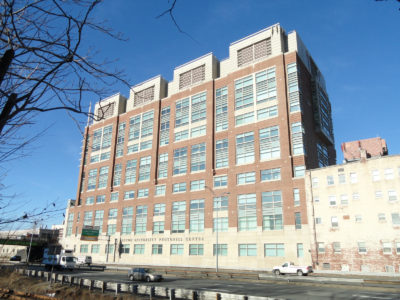
Xin Zhang, a professor of electrical, computational and materials science engineering at Boston University, hosted the first BU Materials Day Workshop in the Photonics Center on Friday. Nine researchers and professors from around the world came together to share their current findings in photonic research advancements.
Zhang gave a presentation on how today’s technology is allowing us to combine photonics with microsystems, or MEMS, and metamaterials. MEMS allow for the merging of electrical functions with computers and communication, while metamaterials are artificially-engineered materials that allow for modulation at the material level.
“We want to use light not just to study materials … We want to use light to control the properties of materials — maybe make the material behave in a way that it wouldn’t,” said Richard Averitt, a professor and researcher at the University of California San Diego and previously BU.
Averitt presented his current research and spoke about the use of resonators and frequencies. Resonators are nano-sized cavities that allow for the bouncing of photons in a closed path. This allows for many functions like the amplification and focus of light in lasers.
He specifically uses sub-wavelength resonators. When loaded with metamaterials, they can provide a better perspective on the development of optical and photonic systems.
“We want to take metamaterials … combine them, integrate them with many, many different types of materials … and my goal is to take small electrical pulses and play with them … across the electromagnetic spectrum, one part being the terahertz gap” Averitt said.
He said he seeks to combine THz, a wave that can penetrate most materials except for metal, with metamaterials, as it would largely impact the dynamics and control in a vast range of photonic materials, both safely and effectively.
Averitt talked about using a natural material, vanadium dioxide, or VO2, in metamaterial research.
“VO2 is a fascinating material from the point-of-view of fundamental physics,” he said. “So what happens is this thing at room temperature … is an insulator. Then it has a transition to a metallic state at around 152 degrees Fahrenheit … the change in conductivity is quite large.”
By combining a metamaterial with VO2, it creates the ability to dynamically control metamaterials.
Also researching metamaterials, David Smith, a professor and director for the Center for Metamaterial and Integrated Plasmonics at Duke University, also gave some insight on his research with metasurfaces. Metasurfaces are electromagnetic sheets that can control the behaviors of electromagnetic waves and create things like holograms.
“We programed a metasurface hologram,” Smith said “We could change the resonance, amplitude and other properties of electromagnetic waves to create it … We separately altered the electromagnetic frequencies to make four different holograms, at four different colors, into one.”
By this methodology, he was able to vary the resolution of holograms, leading to lower costs and more effective computational imaging.
Smith emphasized his research’s impact on automobiles. Metamaterial antennas, for example, can be used for things like full-body 3-D imaging and even beaming focused wireless power for devices at a small distance.
“The plan is to have these antennas … in the Toyota Fleet probably around 2023 … and this would be a very big transition for metamaterials from where we started,” Smith said.
BU’s Photonics Center is a home for research of light, a place where post-doctorates, students and friends from around the world come to perform research in nano-photonics, bio-photonics, imaging and photonic materials and devices.
“The Photonic Center here at Boston University is very well known,” Averitt said. “I was honored to be invited to share my work and to have that opportunity in a place like the Photonics Center is very exciting.”
He added, “50 percent of the research I’ve performed was done at the Photonics Center. This place has been fantastic in just making metamaterials and in training students and … having fun.”
Although there is so much that is unknown, the field of photonics is constantly innovating. Researchers such as the ones that presented on Friday serve as the powerhouse for shaping and improving everyday technology.
“It’s important to have transitions like these to keep the field going,” Smith said. “When you know something like this can happen, it makes you even more excited about fundamental research.”


